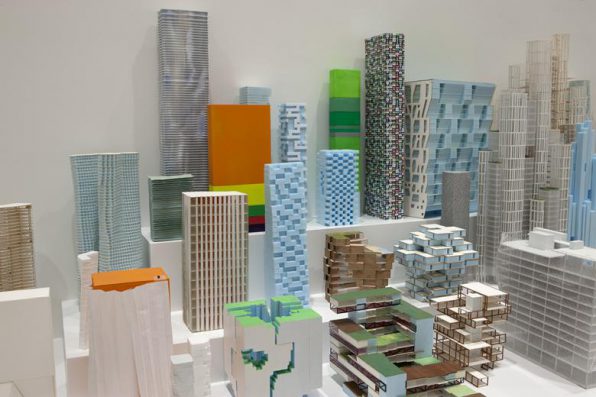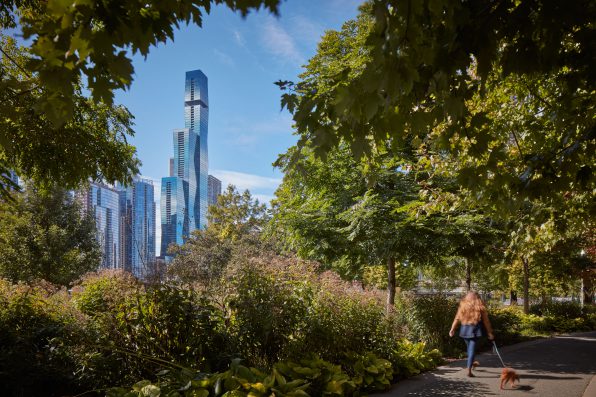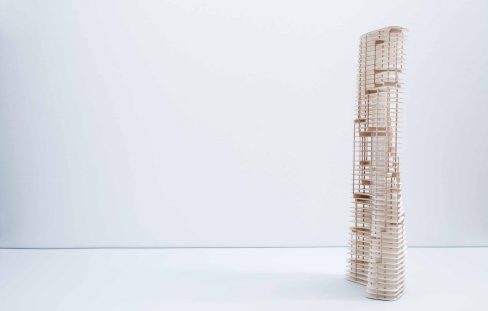World Architects —"The Midwestern 'Anti-Diva': How Chicago Architect Jeanne Gang Has Reinvented the American High-Rise"
“[Jeanne Gang‘s design for Aqua Tower] caused a sensation: The facade was designed as a ‘vertical topography’ with hills and valleys, the curved balconies drawing gentle patterns on the facade, like a curtain in the wind. The organically shaped balconies not only have design appeal, their cantilevers also serve as shading elements and alleviate the notoriously strong winds in the Windy City.
Completed in 2010, the 82-story tower was not only the tallest designed by a female architect, its design finally gave new impulses to the skyline and the local architecture establishment. Gang’s wave design made waves: there was talk of a literal ‘New Wave’ in the design of tall buildings with irregular, sculptural facades. In the eyes of The New Yorker’s Paul Goldberger, Gang questioned the ‘skyscraper as a symbol of male identity.’ In any case, Chicago high-rise architecture was no longer an all-male domain. . . .
Now the architect and her eponymous firm should repeat Aqua‘s success — or even exceed it — with Vista Tower, a supertall tower also at Lakeshore East. It has the potential to reshape the birthplace of the skyscraper this century. Once complete later this year the third-tallest building in Chicago will house more than 400 apartments and a luxury hotel. It looks like a bundle of three towers with 47, 71 and 93 floors in the form of stacked frusta — an angular shape derived from the geometry of crystals. Where the tower is slim, its blue-green glass is dark; the glass is bright in broader areas. The segments look like stacked pyramid stumps jumping back and forth. Not a single balcony divides the facades, but two floors near the top are empty so the wind can blow through and residents (and the supporting structure) are not exposed to unsightly vibrations.”



